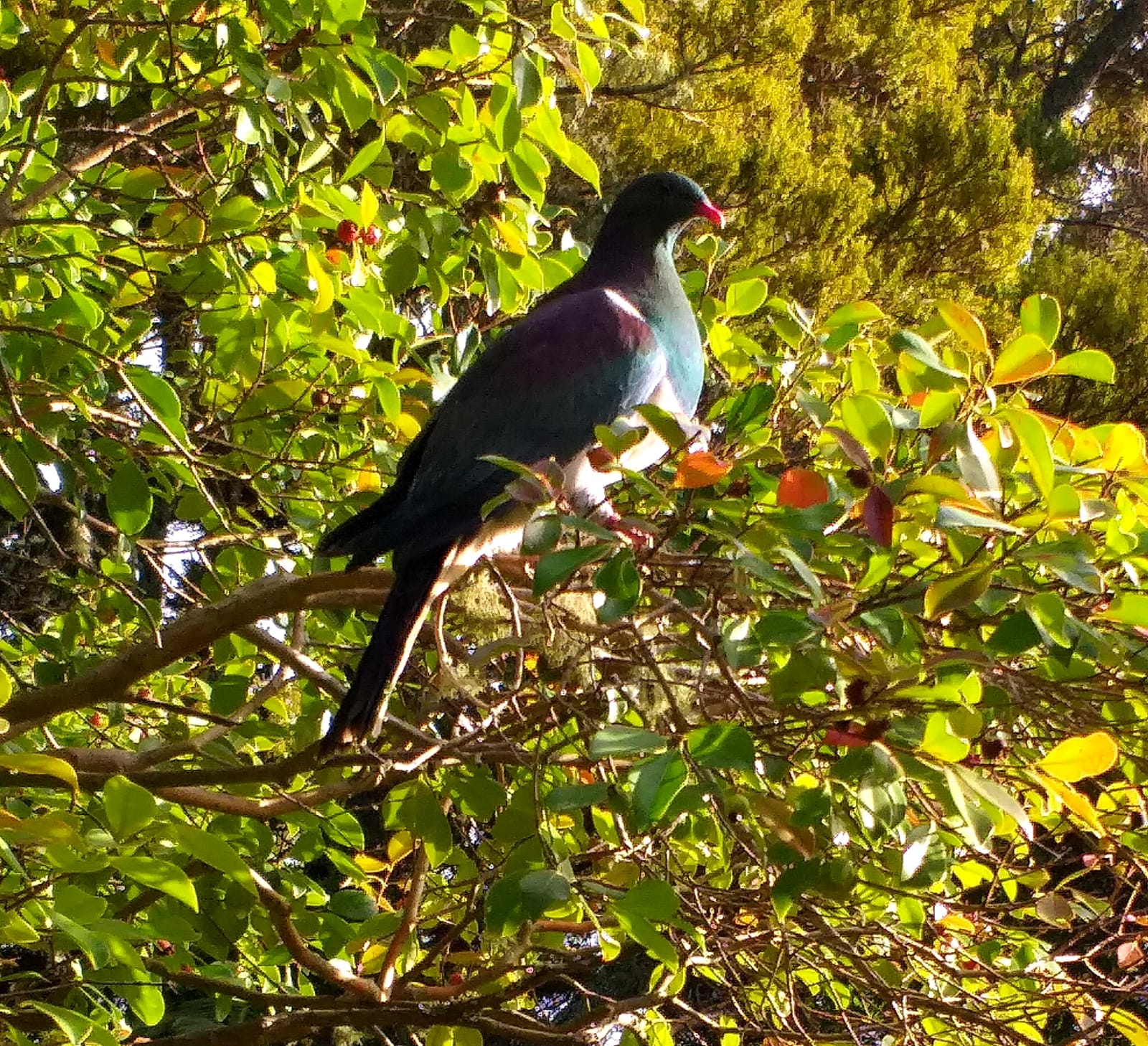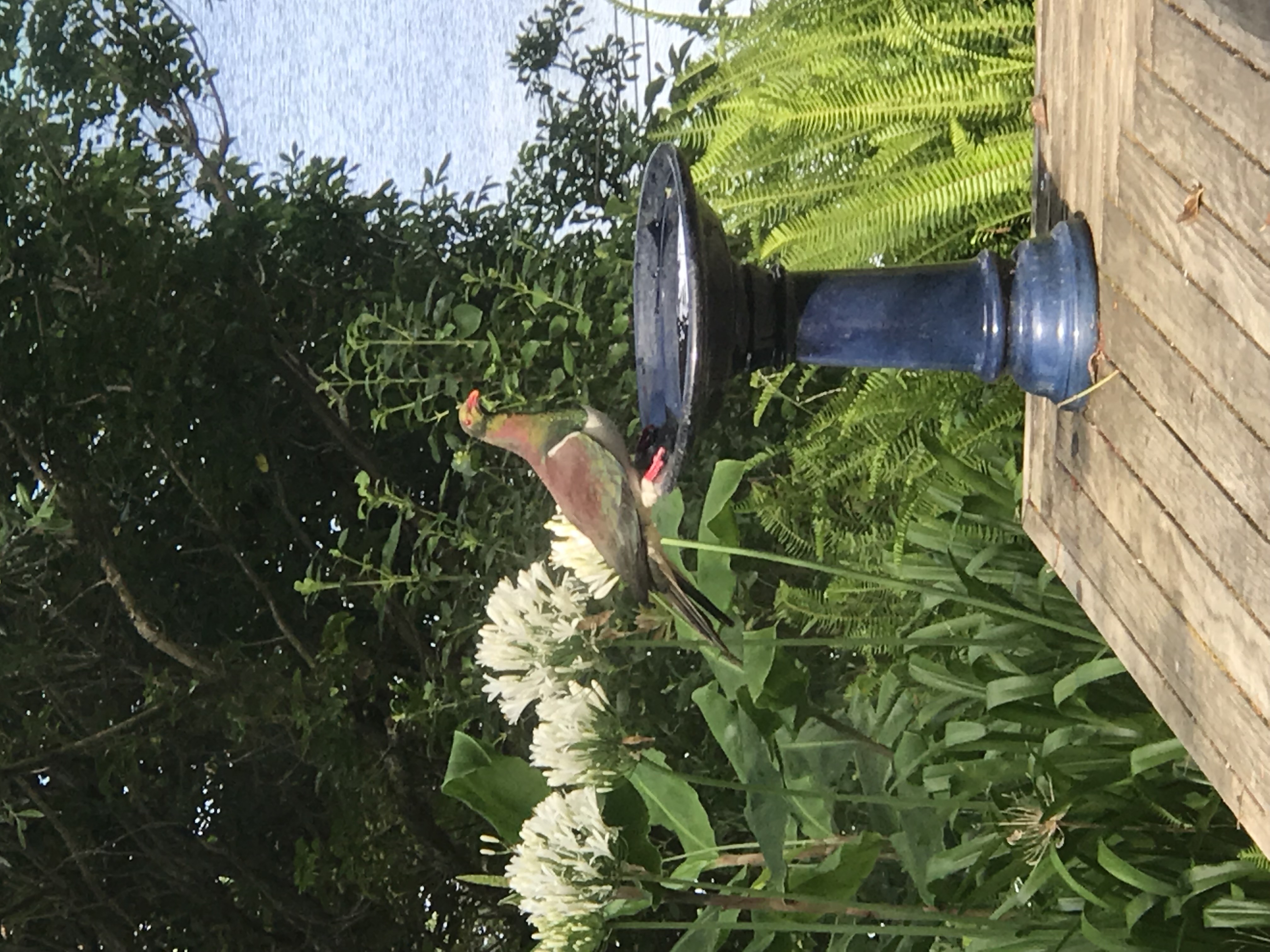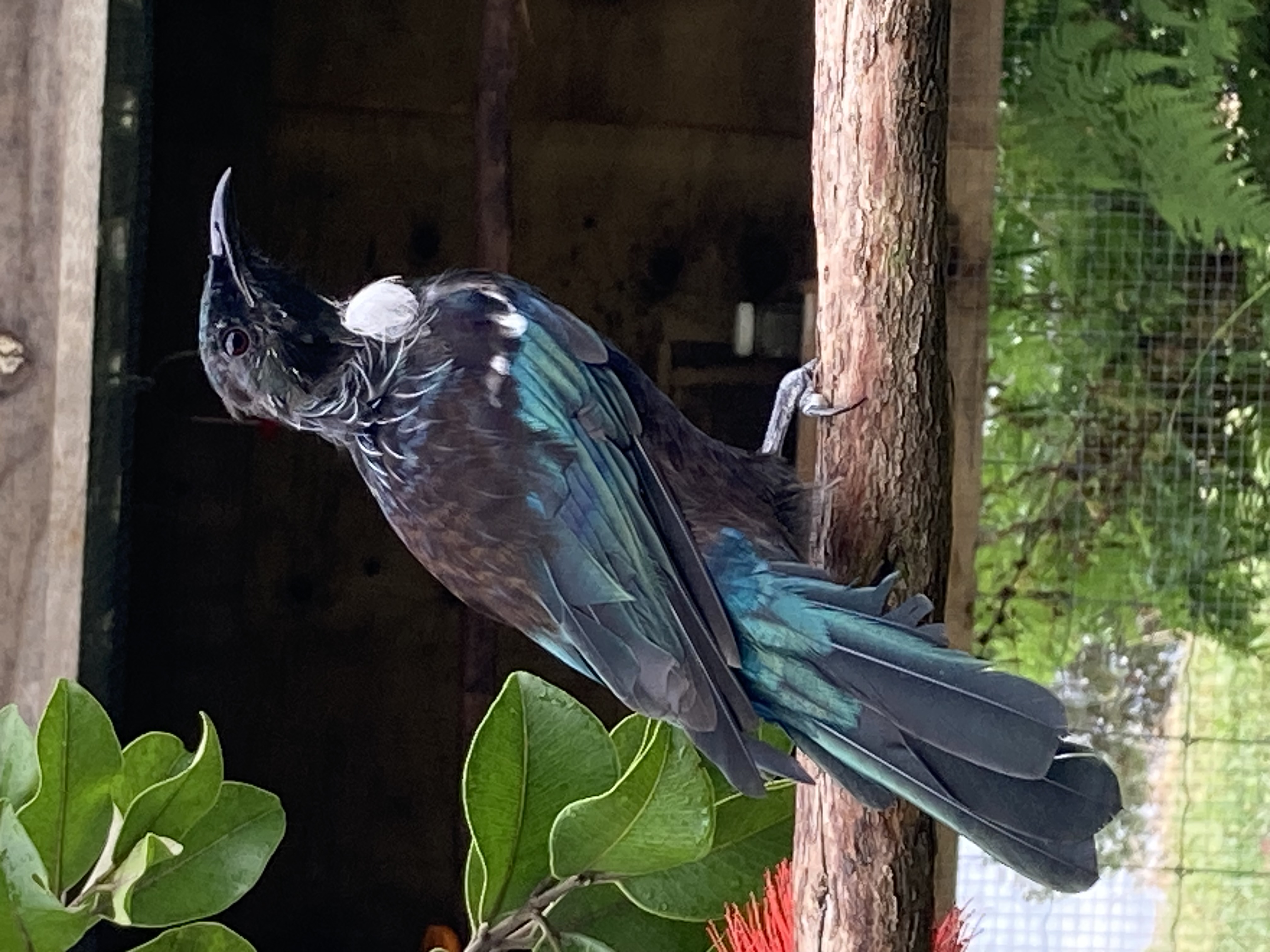Part 2 Native Nest - How to support Native Birds: Help by Planting in Your Garden and Supplementing Their Food
Louise Riddle for Matakana Coast App
04 July 2025, 9:07 PM
 Supporting Native Birds: How to Help by Planting in Your Garden and Supplementing Their Food
Supporting Native Birds: How to Help by Planting in Your Garden and Supplementing Their FoodIt is great to report the population of kererū in our district has improved thanks to dedicated trapping work and community conservation efforts. The Omaha Trapping Teams, for example, are doing a fantastic job keeping predator numbers down so our native birds can flourish.
However in saying this the Native Nest are now getting a kereru a day and need to concentrate on generating a food supply.
Here are the results kindly shared by Rob Zubielevitch for the Omaha TrappingTeams for the six months ending 30 June 2025:
Shorebirds Sanctuary (Omaha Shorebirds Protection Trust)
- 48 mice
- 25 rats
- 1 weasel
Omaha including the dunes
- 165 mice
- 147 rats
- 5 weasels
- 2 stoats
The hills behind Omaha (Southern End)
- 49 rats
- 2 weasels
- 1 stoat
- 3 possums
An incredible effort all done by volunteers who give their time to protect our precious wildlife and habitat.Thank you to the trapping teams, and to all who support them:Whangaripo Valley Eggs, Takatu Landcare, Auckland Council, the Department of Conservation, and the Omaha Beach Community.Without your backing, these results simply wouldn’t be possible.
New Zealand’s native bird species are a vital part of our unique ecosystem. From the striking tui to the iconic kererū, these birds contribute not only to our natural beauty but also to the health of our environment. Unfortunately, many native bird populations face increasing challenges due to habitat loss, climate change, and food scarcity. Fortunately, there are steps that we can take in our own backyards to help these creatures thrive.

The Importance of Native Birds
Native birds play a critical role in pollination, seed dispersal, and pest control, all of which help maintain the balance of local ecosystems. However, with the pressures of modern life, many of these birds are struggling to find enough food, especially in urban areas where their natural habitats are being replaced by buildings and roads.
To help these birds, it’s essential to understand what they need to survive and how we can provide for them, particularly in times of food scarcity.
What Do Native Birds Need?
Each species of native bird has its own unique dietary requirements. Here's a general breakdown of what different types of birds need:
- Nectar-Eaters (e.g., Tui, Bellbird, Hummingbird): These birds rely heavily on nectar from flowers and also consume insects for protein.
- Fruit-Eaters (e.g., Kererū, Kākā): Species like the kererū thrive on fruits and berries, which provide them with the necessary sugars and fats.
- Seed-Eaters (e.g., Finch species): Many birds prefer seeds, especially those from native grasses and trees.
- Insect-Eaters (e.g., Fantail, Grey Warbler): Insectivorous birds consume insects, which are rich in protein and essential for their diet.
Understanding these needs is key when deciding what to plant in your garden or what to offer them when food is scarce.
What to Plant in Your Garden for Native Birds
Creating a bird-friendly garden can be as simple as planting native shrubs, trees, and flowers that provide birds with food, shelter, and nesting sites. Here are some excellent plant options for attracting native birds:
- Flax (Phormium tenax): The nectar-rich flowers of flax are highly attractive to tui, bellbirds, and other nectar-feeding species.
- Rātā (Metrosideros spp.): Known for its bright red flowers, rātā provides nectar that draws in nectar-loving birds such as the tui.
- Manuka (Leptospermum scoparium): A vital food source for both birds and insects, manuka’s nectar-rich flowers are favored by tui and bellbirds.
- Totara (Podocarpus totara): The totara tree produces berries that are a favorite food source for the kererū and other forest birds.
- Karaka (Corynocarpus laevigatus): The fruit of the karaka tree is a delicacy for kererū and many other native bird species.
- Kūmarahou (Pomaderris kumeraho): This plant’s golden-yellow flowers are packed with nectar, which is loved by tui and bellbirds.
In addition to trees and shrubs, it’s also important to plant native grasses, which provide seeds for smaller birds and attract insects for those species that feed on them.
What to Put Out for Birds When Food Stocks Are Low
During times of food scarcity, such as in winter or during droughts, supplementary feeding can help support native birds. Here are some simple ways you can provide additional food:
- Sugar Water or Nectar: A quick way to offer nectar is by mixing sugar and water in a 1:4 ratio. Place the mixture in a bird feeder or a shallow dish to attract nectar-feeding birds like tui and bellbirds.
- Birdseed: Seed mixes designed for native New Zealand species can be placed in bird feeders. Sunflower seeds, millet, and oats are often popular.
- Fruit: Offer fresh fruit like apples, pears, grapes, or berries. Fruit-eating birds such as the kererū will appreciate the added treat.
- Peanut Butter and Seeds: Spread peanut butter on tree branches or bark and sprinkle with seeds to provide a rich source of energy.
- Insects: If you’re comfortable with it, you can offer mealworms or other insects, which are especially useful for insectivorous species like fantails.
The Ethics of Feeding Birds
While it’s wonderful to supplement bird food during challenging times, it’s important to do so responsibly. Overfeeding can lead to dependency, and it may alter birds’ natural behaviors. Make sure to only provide supplemental food during times when natural food sources are low.
Additionally, keep feeding stations clean to prevent the spread of disease, and always offer food that is appropriate for the species you're aiming to support. Bread, highly processed foods, or foods with high salt content should never be offered, as they can harm the birds.
Conclusion: Every Little Bit Helps
Supporting our native birds doesn’t require a huge effort—by planting native species in our gardens and offering appropriate food during lean times, we can make a significant difference. These small actions add up and can help preserve New Zealand's iconic birdlife for future generations.
Whether you have a sprawling garden or just a small patch of land, you can play an essential role in the survival of these remarkable species. So, get planting and help give our native birds a fighting chance!
Follow our journey and learn more about the work we do:
Native Nest NZ Facebook Page
To our volunteers, supporters and everyone helping behind the scenes thank you for being part of our love story with wings.




